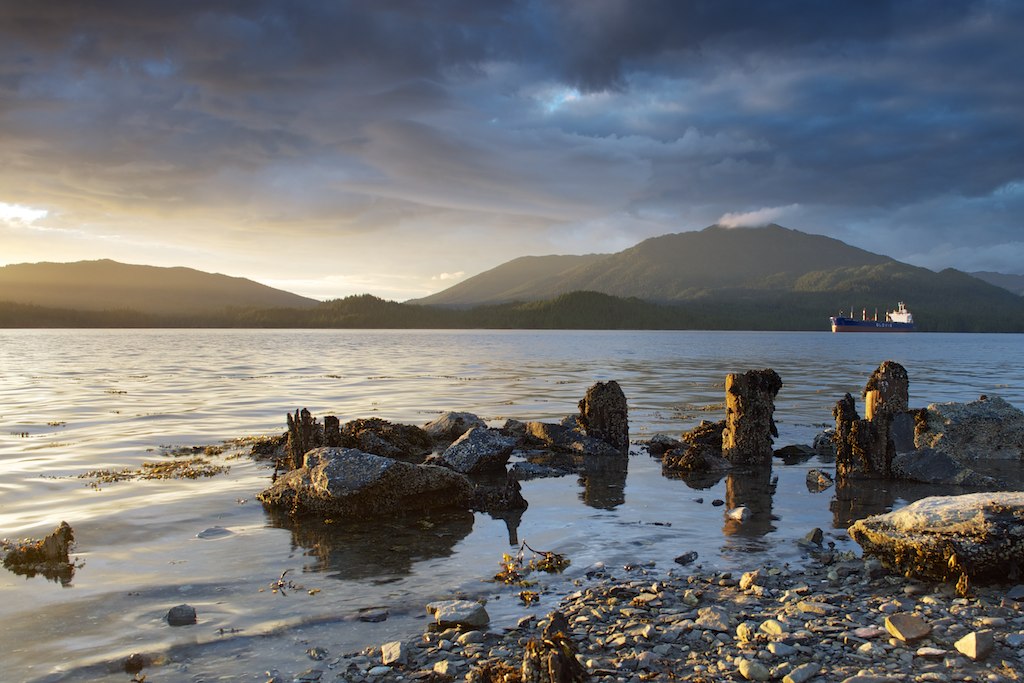
Earlier this year the BC government approved the Great Bear Rainforest Land Use Order, grounding the region’s land and forest protection into law. Now it’s time to anchor the Great Bear Sea solution – comprehensive ecosystem-based marine spatial plans – into law as well. It’s time to achieve lasting protection for this precious area.
We’re taking this message to the 2016 International Marine Conservation Congress (IMCC4) in St. John’s, Newfoundland this week, with a presentation on “Getting legal traction for BC’s science-based marine spatial plans.” And we will present the unique legal solutions, in both Canadian and Indigenous law, that can be crafted to reflect the distinctive region and people who live there.
Exemplary plans with no legal teeth
The Marine Planning Partnership (MaPP) plans, described here and here, and in this legal journal article “Brave New Wave: Marine Spatial Planning and Regulation on Canada’s Pacific,” are a significant advance in ecosystem-based management for the hapless ocean. It’s especially important as our seas are buffeted from all sides by waves of new development proposals, growing pressure from increased shipping and pollution, and hidden threats in the form of rising sea temperatures and sea levels from climate change, acidification or climate change’s evil twin, and rising underwater noise levels.
MaPP exemplifies the way marine planning should be done. By proactively identifying which areas should be zoned for protection before new projects are proposed, and by zoning the ocean to account for multiple uses, just as we do on land, we can achieve both ecosystem integrity and business certainty for BC’s coast. The governance of MaPP is also commendable for governments committed to reconciliation: the process was co-led by the Province of BC and 17 First Nations on a government-to-government basis.
The plans were finalized in 2015, but they don’t yet have legal teeth. Leaving the plans as voluntary documents is risky. Industry complies with statutory obligations, not suggestions, and government decision-makers require laws to back up their directions and decisions. MaPP’s carefully designed Protection Management Zones are ready to be protected by a mandatory law. The federal government’s commitment to increase marine protected area (MPA) protection to at least 5% by 2017 and at least 10% by 2020 provides a golden opportunity to accelerate MPAs in the Great Bear Sea, as we testified to the House of Commons Standing Committee on the Environment in June.
So what legal solutions are available?
Legal teeth can be added to MaPP through provincial and Indigenous law, as well as federal laws. Given that the federal government has legislative authority in Canadian law over two major ocean uses, fishing and shipping, and there's new momentum at the federal level to achieve legal commitments on ocean protection, we are looking closely at federal law.
And there’s no shortage of federal laws available to create MPAs: the Oceans Act, the Canada National MarineConservation Areas Act, Canada National Parks Actand the Canada Wildlife Act. However, the process of designating each individual MPA can be incredibly slow. Because of the delays that plague designating new MPAs, we are looking at other legal options.
An entirely new type of protected area was designed for the Great Bear Rainforest, the ‘conservancy’ under the BC Parks Act. Similarly, for the Great Bear Sea, a new law could be created that bolsters MaPP by creating binding obligations and timelines for action. Many countries have national MPA laws with more detailed and stringent obligations than we have in Canada, and these laws enable quicker action on establishing MPAs.
A new, stand-alone law for the Great Bear Sea area could:
- Define the Great Bear Sea as a geographic area
- Incorporate Indigenous law
- Enshrine the ecosystem based management (EBM) framework into decision-making
- Create a tripartite decision-making authority, e.g, the “Great Bear Sea Commission”
- Require a zoning framework
- Require geographic response plans
- Require government decisions to conform with zoning and the EBM framework
This federal law could be modeled after the Great Barrier Reef Marine Park Act in Australia, in place since 1975.
Short of creating a new Great Bear Sea law, we are also examining a number of other legal options. Part of the roadblock in establishing MPAs in the Great Bear Sea may be the way our current law works. The Oceans Act contains no timelines, has no minimum standards for protection, does not set overall conservation objectives, doesn’t incorporate international protected area categories, and does not include a requirement to create a network of MPAs.
So it was great to hear the pledge made by Oceans Minister Dominic LeBlanc on Oceans Day this June in Ottawa. The government has committed to “Establish Marine Protected Areas faster: Examine how the Oceans Act can be updated to facilitate the designation process for Marine Protected Areas, without sacrificing science, or the public’s opportunity to provide input.”
Our brief to the Parliamentary Environment Committee has some ideas how this could happen. For example, instead of the current practice of designating MPAs one by one, a suite of MPAs could be designated as a group, as is done by many other countries. The UK, for example, announced 23 new MPAs at once in January 2016.
The federal government’s commitment to increase MPA protection to 5% by 2017 presents a perfect opportunity to give the MaPP plans some legal teeth. Whatever the legal path chosen, it is clear that now is the time to create lasting solutions, anchored in law, for the Great Bear Sea.
Let’s #LovetheGreatBearSea, and put laws in place to protect it.
By Linda Nowlan, Staff Counsel
Photo: The Great Bear Sea at Prince Rupert, BC (Jayne via Flickr).